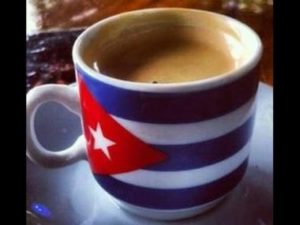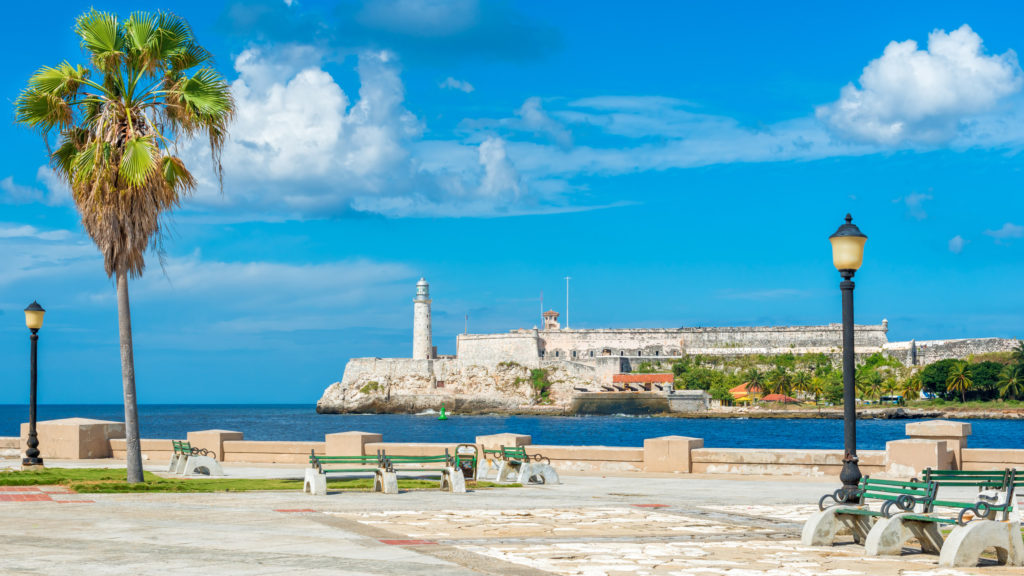 EL CAFE, EL INTIMO E INSEPARABLE AMIGO DEL CUBANO.
EL CAFE, EL INTIMO E INSEPARABLE AMIGO DEL CUBANO.
Quien no sabe que para los cubanos en general el dia no comienza sin saborear un sorbito de Cafe, no importa que sea el escaso que viene con la libreta de abastecimiento o si llegó del extranjero: lo imprescindible es este simbolo de nuestra cubanía.
A Cuba llegó la planta del cafeto introducida por Don José Gelabert, quien fundó en el Wajay, en las afueras de La Habana, el primer cafetal de la Isla hacia 1748, con semillas provenientes de Santo Domingo, actual República Dominicana. La avalancha de haciendas cafetaleras se produjo en Cuba con la llegada de colonos franceses que emigraron desde Haití debido a la revolución de 1791.
Conocedores de las propicias condiciones para el cultivo del cafeto, éstos encontraron terrenos excelentes en las zonas montañosas del país ubicadas en las regiones occidental, central y oriental del país. De esa manera surgieron las grandes haciendas cafetaleras cubanas, que en breve tiempo devinieron poderosos centros productores del grano.
Cuba llego a ser el primer exportador mundial a inicios de los años 90s, convirtiendose en una industria nacional y como una bofetada al cubano, al igual que la industria azucarera, que no se ha podido recuperar desde hace ya algunos años.
Aun asi, como una tradicion cubana, el cafe hasta la actualidad se ha convertido en una tradicion familiar.
En nuestros días las producciones de cafés gourmets de refinada calidad se dirigen exclusivamente a mercados muy selectos, hacia el extranjero, no en balde los más exquisitos connoisseurs saben de la existencia de esta rara joya que es el café cubano.
La especie que se cultiva principalmente en Cuba es la Coffea arabica y dentro de ella las variedades que más se desarrollan se encuentra Typica, Bourbon, Caturra: amarillo y rojo, San Ramón y Villalobos.
En el proceso, de la semilla a la taza, cada planta es atendida individualmente hasta que emerge el grano maduro, cuya recolección se hace uno a uno por la mano del hombre, tras el saber centenario de campesinos que hicieron suyo el previo cuidado de posturas y frutos.
Posee la isla antillana la mayor cantidad de ruinas de haciendas cafetaleras de todo el mundo con valor arqueológico, muchas de ellas excelentemente bien conservadas y enclavadas en zonas que han sido declaradas por la UNESCO Patrimonio de la Humanidad.
Cuba produce unos 100.000 sacos de 60 kilogramos de arábiga al año, según la Organización Internacional del Café, mientras este importante rubro exportable de la economía nacional se mueve en la Cartera de Negocios de la Isla abierta a los inversionistas foráneos.
No puede pasar por alto que se trata de la segunda mercancía comercializada en el mundo, después del petróleo, y cada año se beben 400 000 millones de tazas de café en todo el planeta, cifra entre la que se encentran todos los que gustan de saborearlo y disfrutar su aroma.
Los Cubanos no nos conformamos con dejar de conseguir como sea, el espumoso y sabroso cafe cubano de todas las mañanas.
 EL CAFE (THE COFFEE), THE INTIMATE AND INSEPARABLE FRIEND OF THE CUBANS.
EL CAFE (THE COFFEE), THE INTIMATE AND INSEPARABLE FRIEND OF THE CUBANS.
Who does not know that for Cubans in general, the day does not start without savoring a sip of Cafe, no matter if it is the scarce one that comes with the supply book or if it came from abroad: what is essential is this symbol of our Cuba.
The coffee plant introduced by Don José Gelabert arrived in Cuba, who founded in Wajay, on the outskirts of Havana, the first coffee plantation on the Island around 1748, with seeds from Santo Domingo, current Dominican Republic. The avalanche of coffee plantations occurred in Cuba with the arrival of French colonists who emigrated from Haiti due to the revolution of 1791.
Knowing the favorable conditions for the cultivation of the coffee tree, they found excellent terrain in the mountainous areas of the country located in the western, central, and eastern regions of the country. In this way, the great Cuban coffee plantations arose, which is a short time became powerful grain-producing centers.
Cuba became the first world exporter in the early 90s, becoming a national industry and a slap in the face of the Cuban, like the sugar industry, which has not been able to recover for some years now.
Even so, as a Cuban tradition, coffee until today has become a family tradition.
In our days the productions of refined quality gourmet coffees are directed exclusively to very select markets, abroad, not in vain the most exquisite connoisseurs know of the existence of this rare jewel that is Cuban coffee.
The species that are mainly cultivated in Cuba are the Coffea arabica and within it, the most developed varieties are Typica, Bourbon, Caturra: yellow and red, San Ramón, and Villalobos.
In the process, from the seed to the cup, each plant is cared for individually until the mature grain emerges, whose harvesting is done one by one by the hand of man, after the centennial knowledge of peasants who endorsed the previous care of postures and fruits.
The Antillean island has the largest number of ruins of coffee plantations in the world with archaeological value, many of them excellently well preserved and located in areas that have been declared by UNESCO a World Heritage Site.
According to the International Coffee Organization, Cuba produces about 100,000 60-kilo bags of arabica a year, while this important exportable item of the national economy moves in the Island’s Business Portfolio open to foreign investors.
It cannot be ignored that it is the second merchandise marketed in the world, after oil, and every year 400 billion cups of coffee are drunk worldwide, a figure that includes all those who like to savor it and enjoy its aroma.
We Cubans are not content to stop getting, however, the sparkling and tasty Cuban coffee every morning.
Agencies/ RHC/ Guadalupe Yaujar/ Maite González/ Extractos/ Excerpts/ Internet Photos/ Arnoldo Varona/ www.TheCubanHistory.com
THE CUBAN HISTORY, HOLLYWOOD.









